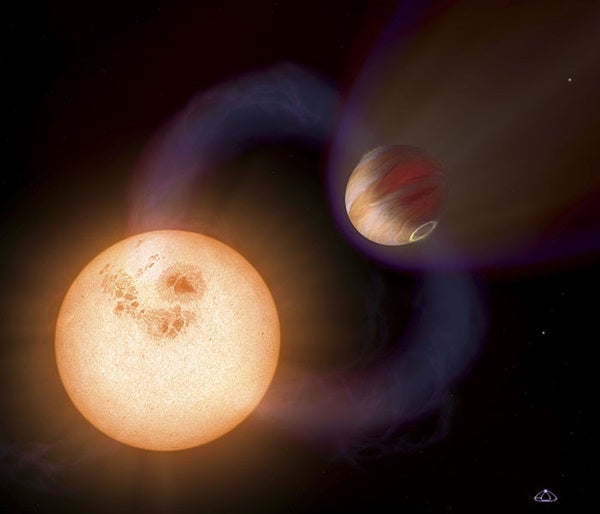There’s something weird going on at RZ Pisces. Nobody can seem to tell how old it is — or why a star of its age is still abundant in the gas and dimming and debris associated with much younger systems.
If it’s old, there should be low X-ray activity and no flares. Young stars exhaust their protoplanetary disks at 10 million years, so an old star shouldn’t have one. Yet RZ Pisces has an abundant protoplanetary disk that has caused periodic dimming over the course of 40 years.
So is it old or young? That’s what Kristina Punzi, a PhD candidate in astrophysics at the Rochester Institute of Technology, wants to find out. And one of the causes may be the destruction of a planet.
“There’s no way a primordial disk could be around a star of that age, so some kind of cataclysmic event has to have happened for this star to still have a disk,” Punzi says.
RZ Pisces is a G-type star a hair smaller than the sun in the constellation Pisces / Piscium. It hasn’t yet been found to be in any group of stars around it of yet, meaning it may not be in a stellar association. Most evidence seems to suggest that it’s near the main sequence, when a star has finished accreting matter and has cleared its debris field into asteroids, planets, and comets. It may live out a life like the Sun, or a larger, older star that is leaving the main sequence.
But one of Punzi’s hypotheses is that RZ Pisces did, in fact, form a planet, a kind of close-in gas giant known as a “hot Jupiter.” These planets orbit their stars in less than a week in Earth-time. Because of their proximity to their parent star, temperatures rise to levels unseen on any planet in our solar system. Mercury, the closest in planet in our solar system, has an orbit of 88 days. In that time, the first discovered hot Jupiter (and first confirmed planet around a Sun-like star at all) completes nearly 22 orbits.
But because they’re so close to their star, hot Jupiters can easily get ripped apart. If that happened, a cloud of debris and gas would trail the remnants of the planet before the gas falls back into the star. As Punzi says, whatever is around RZ Pisces is “something with lots of gas, not just a debris disk” In other words, it creates a sort of post-planetary disk that should show up as infrared excess. And, indeed, RZ Pisces’ disk shows plenty of infrared excess.
There’s still plenty of work to be done on RZ Pisces. For instance, its distance is completely unknown. If it’s pre-main sequence, it’s likely 489 light years away. If it’s post-main sequence, it’s closer to 1,300 light years away. In addition, radial velocity measurements may show the faint tug of another object. If that’s true, it’s likely a smaller dwarf star, but the evidence is limited.
But for now, RZ Pisces is just a weird, small star of indeterminate age that possibly ate a planet.
This post has been edited to correct the stellar classification and indicate that it may be a star exiting main sequence.










